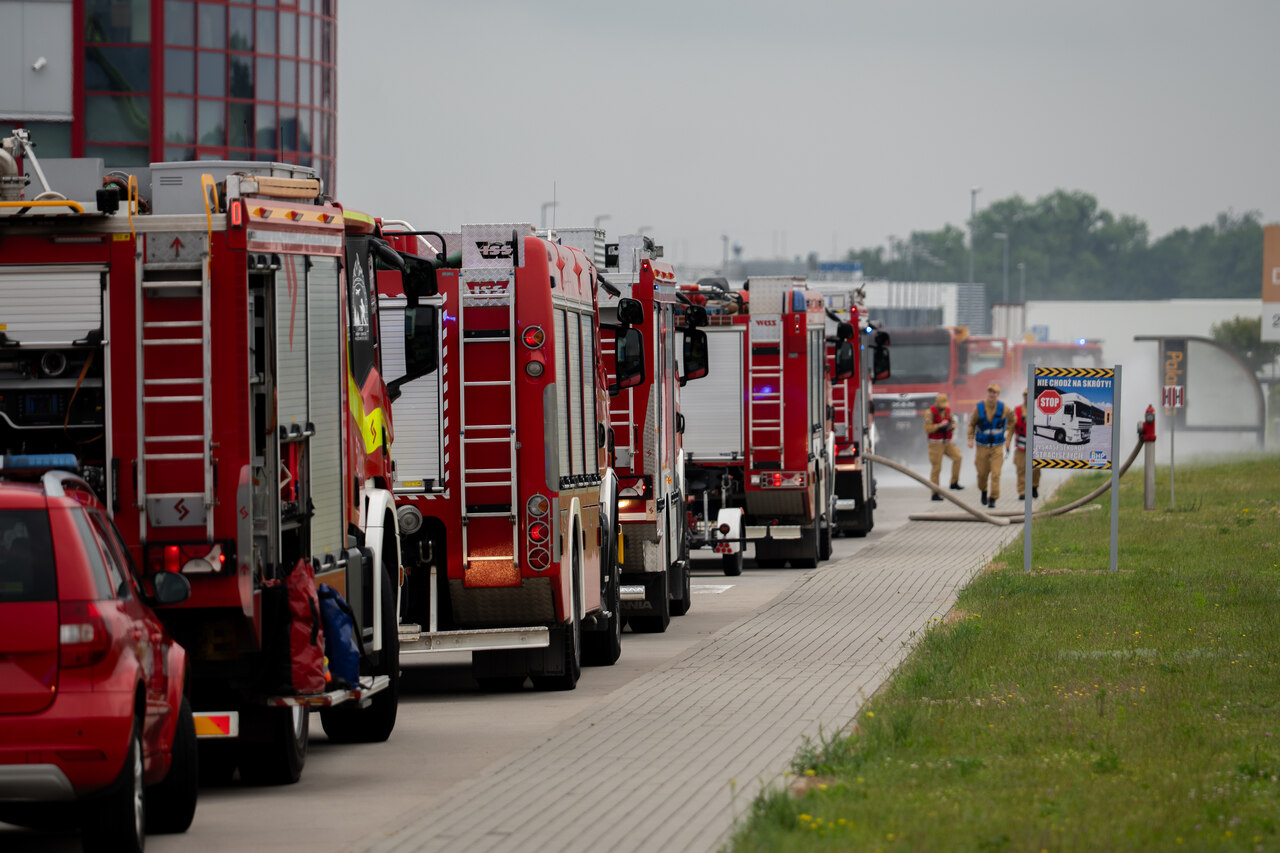For more than four decades, the EU SEVESO Directive has obliged manufacturers and logistics operators to comply with stringent standards for the storage of products containing hazardous substances. Its importance continues to expand in line with the dynamic growth of markets such as cosmetics, which has increased by 75.3 per cent since 2014, or household chemicals, with its value reaching EUR 1.65 billion in 2024. Given the scale and complexity of warehouse operations in such industry segments, choosing a highly specialised logistics operator is nowadays a key factor. When placing their goods in the hands of such a provider, manufacturers not only get a warranty of safety, but also avoid the risk of having their plant shut down due to improper product storage conditions.
In the 1970s, a serious industrial accident took place in the Italian town of Seveso, causing harmful substances to leak into the environment. To prevent similar incidents in the future, the European Union devised the SEVESO Directive, which aims to ensure a higher level of safety. After almost four decades since its adoption, it remains relevant. The legislation has been amended several times, and the scope of operations involving products containing dangerous substances has increased, along with the escalated nature of potential risks. What is worth bearing in mind is that such substances may be found not only in self-evident products, such as chemicals or flammable materials, but also in everyday items – even toys with batteries potentially posing a threat to the environment.
The SEVESO Directive provides very specific guidelines on the storage of products containing hazardous substances. Yet, not every manufacturer or distributor realises how many detailed requirements are involved, from quantity thresholds to documentation and safety systems. Failure to comply with the regulations may even bring about the suspension of the plant’s operations, which entails significant financial losses. Warehousing of chemical or cosmetic products, especially in large quantities, requires appropriate procedures, qualified personnel, dedicated infrastructure, safety zones and ongoing monitoring in place. With all this in mind, dealing with such products is best left to specialised operators who can ensure compliance with the legal requirements as well as the safety of the entire supply chain,” says Mariusz Gajek, Central Europe Technical Director at FM Logistic.
Maximum safety
The SEVESO regulations apply to all EU member states, including Poland. Warehousing facilities subject to these regulations fall under the ongoing supervision of specialised state agencies, such as the Voivodeship Inspectorate for Environmental Protection or the regional unit of the State Fire Service of Poland. Not only do they conduct yearly infrastructure inspections and assess compliance with applicable standards, but also issue administrative decisions as to the operational capabilities of a given facility, based on detailed documentation and applicable legal regulations.
– Moreover, the directive also requires operators to carry out drills in cooperation with all fire brigades in the region every three years. The last drill held at our site in March this year involved over 16 fire engines. A variety of emergency scenarios were simulated during the drill so that the staff and emergency services could be prepared for real-life crisis situations. Such drills have a great practical value: they allow the emergency services to become thoroughly familiar with the site infrastructure, test safety procedures in real-life conditions, and put the full range of rescue operations through their paces. Thus, in the event of a real threat, the services’ response is faster, more effective and better coordinated. The drills also provide us an opportunity to test whether our security systems in place operate properly,” adds Mariusz Gajek.
The key safety requirements imposed by the SEVESO Directive further include ongoing monitoring of the quantity and classification of substances stored in warehouses. It’s the operational backbone for such facilities. While every manufacturer or distributor must produce a product safety data sheet specifying, for example, the content of flammable and hazardous substances, it is the operator who is responsible for their ongoing monitoring. Indeed, this is why their role is so vital, as each batch of goods needs to be continuously quantified, aggregated and verified to ensure compliance with regulations and maintain full control over the safety of the site. Ultimately, it’s the operator’s regular, day-to-day efforts that determine whether the warehouse meets stringent standards and can operate safely.
A warehouse prepared for any situation
Warehouses with high safety standards store a variety of products. With each of them requiring specific storage conditions, manufacturers and distributors often outsource the warehousing task to logistics operators. Not only do they provide the services required by regulations, but also ensure that their clients’ commodities are stored in a secure and responsible manner.
-Our warehouses have been designed to store a variety of materials in conditions tailored to their specific characteristics. Facilities for products containing hazardous substances are fitted with extra safety systems – from smoke detection and dedicated sprinkler systems, through sump trays and fire barriers, to a special reinforced concrete design that prevents substances from leaking into the environment. On top of that, we’ve introduced a closed water and sewage system, which is another protective measure. These solutions ensure we meet the highest safety standards, and our clients can have full confidence in how their products are stored,” declares Mariusz Gajek from FM Logistic.
With a fast-changing market and growing environmental awareness, being able to meet stringent regulations, such as the SEVESO Directive, emerges as a major competitive advantage. As a result, manufacturers and distributors can focus on growing their business while building lasting client trust, confident that the products are stored safely, in compliance with regulations and mitigating risks to both people and the environment.



